
IRP Engineering Section, Inspector Keith Kintol and Joey Agulto inspect the progress of the Sugar Dock Pavilion to ensure that plan specifications are adhered. The design was coordinated by IRP Engineer Mariano Iglecias.
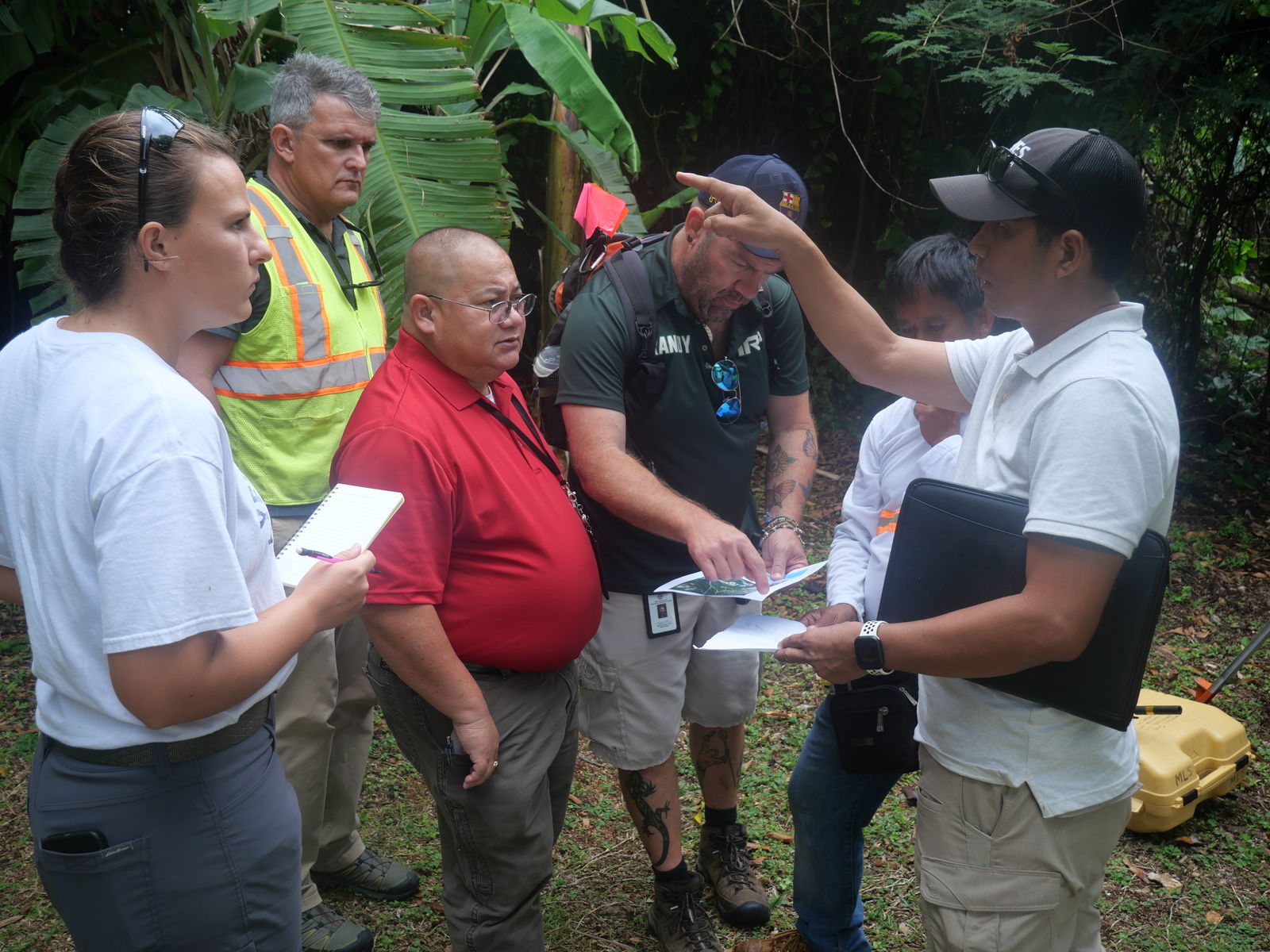
Part of IRP’s mission is to assist government agencies with environmental assessments (biological/archaeological) to ensure compliance with regulatory permits. Photo shows, clockwise, Samantha Meyer/Biologist, Scott Bierly/Archaeologist, Mariano Iglecias/Engineer, Randy Teal/Biologist along with CUC’s Engineer Joel Puyat conduct a site visit for the Fina Sisu Lane sewerline replacement project.
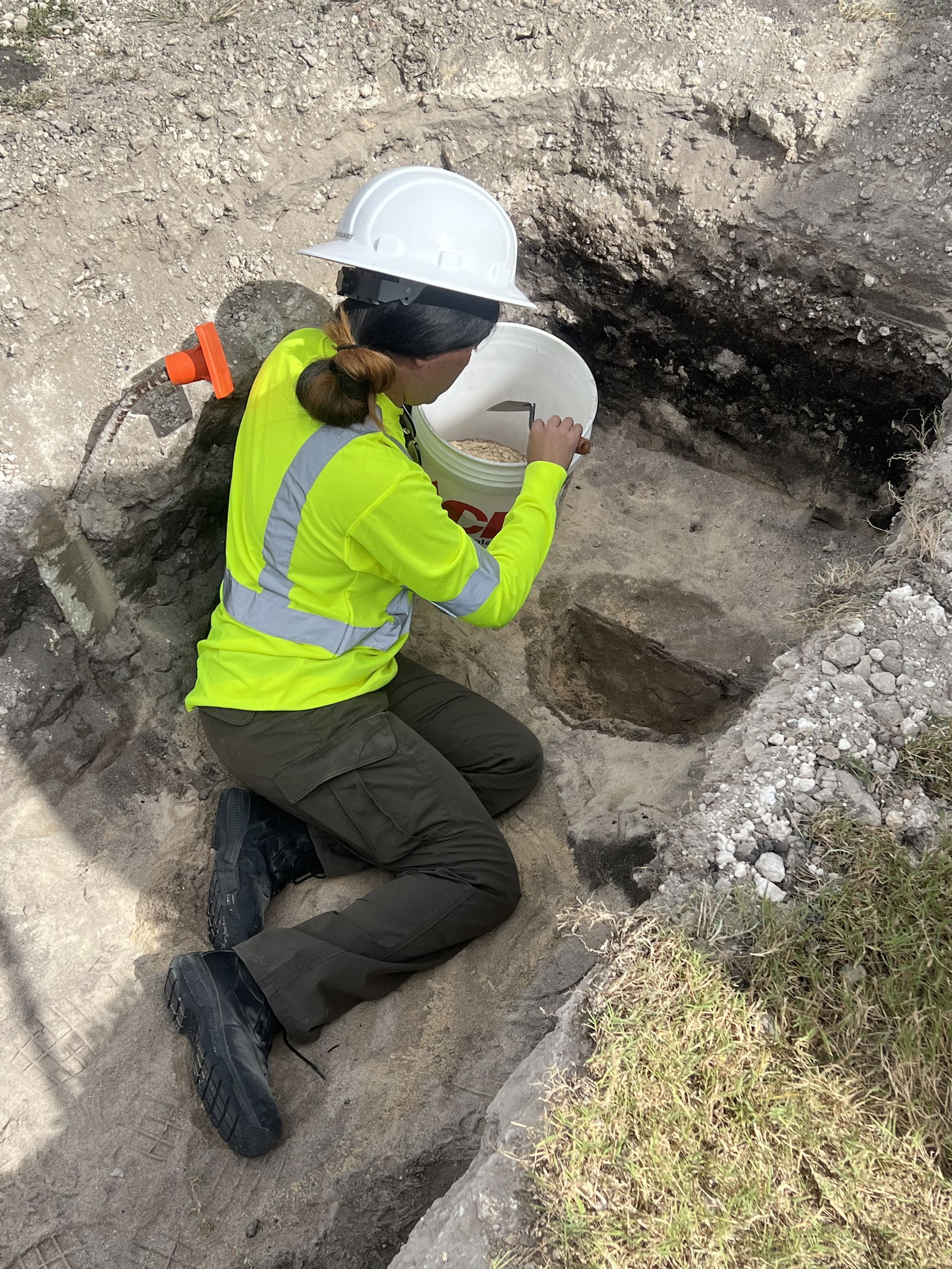
Environmental assessments whether they be archaeological or biological are still required for government projects. IRP assist government agencies in having subject matter experts conduct field assessments/surveys/etc. to ensure compliance with regulatory permits. IRP Anthropologist Keona DLG Torres is seen here excavating a site at Apengagh Street and Ghillis Street as part of a Community Disstar Block Grant-Disaster Recovery for Apengagh Street and Gillilis Street Drainage Improvement. This is a project spearheaded by DPW and NMHC.
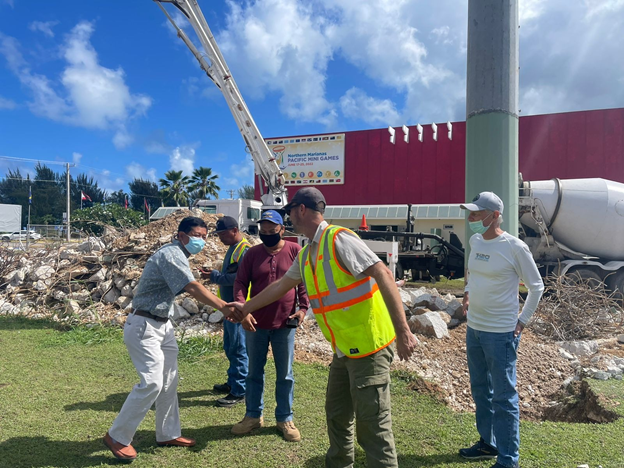
IRP Lead Archaeologist Jeremy Freeman and IRP Section 106 Coordinator Scott Russell discuss with contractor Steve Qian/USA Fanter project details for the Oleai Sports Complex baseball field fencing project. HPO’s John Palacios and Jose Terlaje look on. IRP staff are onsite at the Oleai Sports Complex assisting Public Assistance Office/GAR and Historic Preservation Office on-site monitoring.

IRP Archaeologist Scott Bierly, NMSA Executive Director Carline Sablan, NMSA Engineer Mario Mayuga and IRP Lead Archaeologist Jeremy Freeman at the Oleai Sports Complex to discuss plans for the Oleai Sports Complex batting cage.
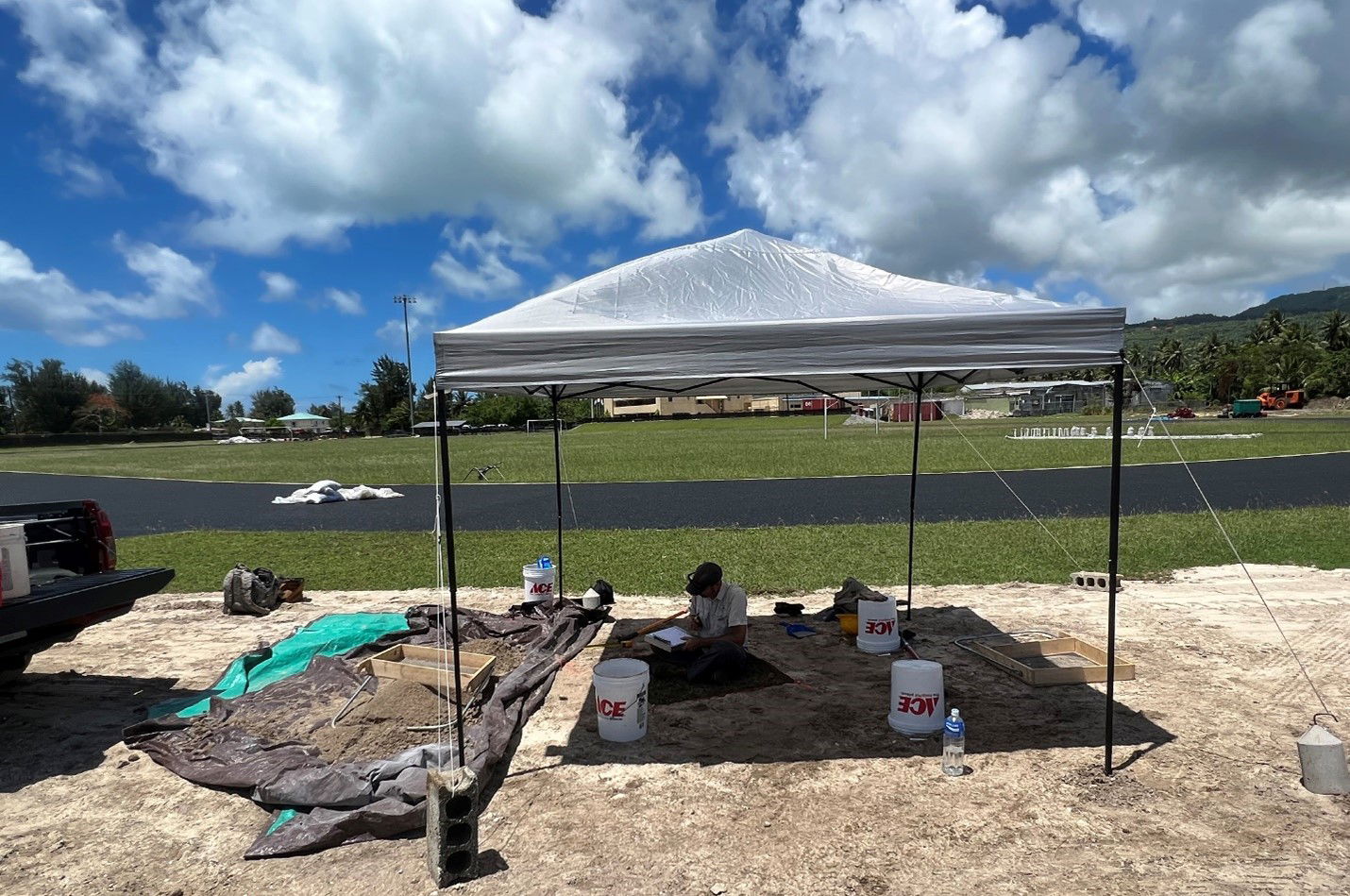
Historical, archeological consultation must be conducted in pursuant to CNMI P.L. 3-39 and the National Historic Preservation Act to obtain local and national project permits. IRP Archeologist Jeremy Freeman conducts archeological testing for a proposed light post location at the Oleai Sports Complex.
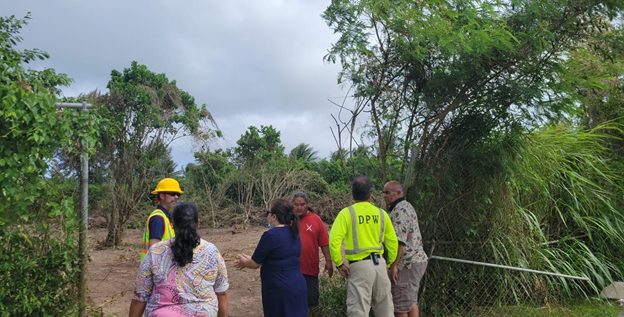
HPO’s Rita Chong, Linda Torres and Jay Fitial, DPW’s Dwayne Muna and IRP Archaeology Team discuss temporary parking lot progress east of the Oleai Sports Complex track and field.

Artifacts found in the temporary parking lot from northwest and southwest of the Oleai Sports Complex track and field by the IRP Archaeology Team:
1) Pestle
2) Hammer
3) Chisel
4) Broken piece
5) Small white artifact which is a broken piece from a weapon made from a human thigh bone (found near the press box area).
These indicate that the area may have been used for tool production. The archaeological team examine, research and hypothesize about possible uses for the artifact as well as how it fits in the possible site usage in the past. They are then surrendered to CNMI Museum once the report is complete.
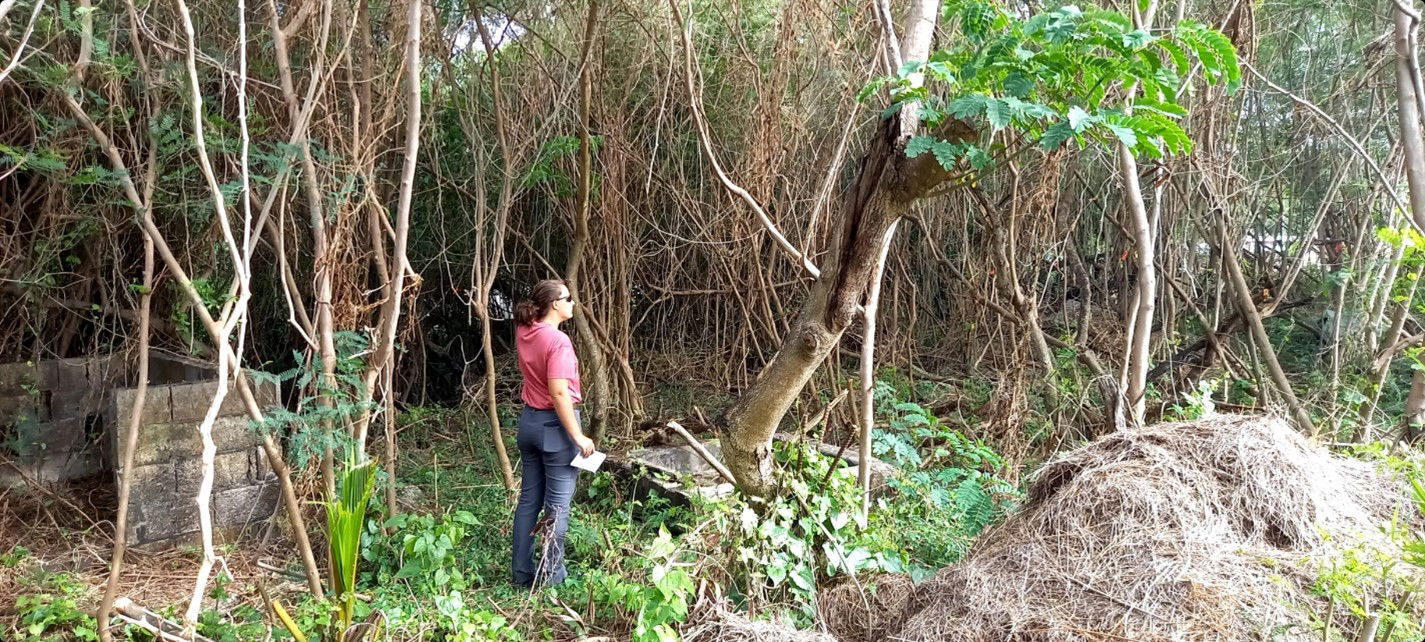
In adherence to CNMI and U.S Fish and Wildlife regulations, IRP Biologist Samantha Meyer surveys the area for possible threatened and endangered species and their habitats at the Fina Sisu CUC sewer line repair project site.











